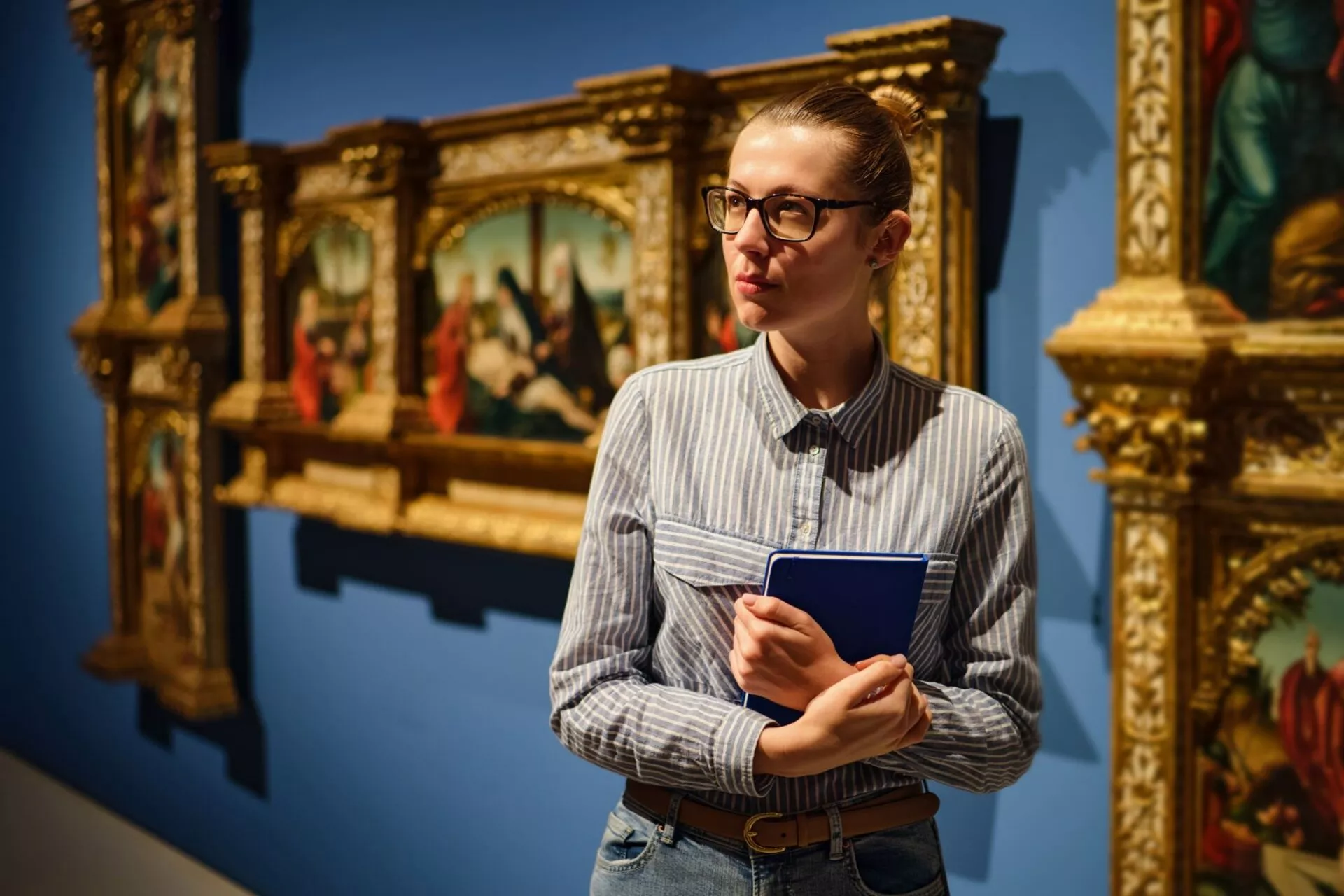
Art Markets: Spotlight on the Old Masters
In the constellation of artworks circulating on the market, what do we mean when we talk about “Old Masters” in relation to painting? How do you get started in a market where works rarely come up for sale? What are its key features and trends? What should you look out for when buying an Old Master? To answer these questions and more, our Head of Art Banking, Laurent Issaurat, met with Matthieu Fournier, Associate Director and Auctioneer of Artcurial and a specialist in Old Master and 19th-century art.

Matthieu Fournier
Associate Director of Artcurial and a specialist in Old Master and 19th-century art.
“Matthieu Fournier is Associate Director at Artcurial, where he specialises in paintings, drawings and sculptures by Old Masters and 19th-century artists. He works as an auctioneer at voluntary and judicial sales, and advises families and collectors in his areas of expertise. Matthieu joined Artcurial after qualifying as an auctioneer in 2006. He set up their Old Masters and 19th-Century Art department, establishing Artcurial as French leader in the field in the mid-2010s. Aided by a team of passionate art enthusiasts and extensive documentation, he works to generate interest in and appreciation of old masterpieces among art connoisseurs and future collectors.”
© Artcurial
Laurent Issaurat: What is meant by the term “Old Masters”?
Matthieu Fournier: In painting, it refers to the period from the birth of Western painting in Trecento Italy (1300s), with its emerging ideas of perspective and spatial depth, to World War I. The “Great War” brought about a seismic shift in Western culture, signalling the end of a golden age and the world that went with it. The Impressionists, the first “Modern” artists, are harder to classify as they straddle two periods. In fact, the name “Old” Masters itself is problematic. Nothing beautiful is ever old. Beauty is timeless. I think we should simply call them “Timeless Masters”.
Laurent Issaurat: Is it still possible to find works by the Old Masters, and at what price?
Matthieu Fournier: The Old Masters market is full of discoveries, with major artworks regularly “rediscovered”, many of them unsigned and under-documented. This market is one of scarcity. Museums regularly add to their collections, meaning that opportunities to buy Old Masters have become increasingly rare. Price-wise, important works can run from tens of thousands of euros to several million. London used to be the main marketplace until around a decade ago, but post-Brexit import and export complexities have dulled its appeal. New York is now dominant, but France is not far behind. We have always been a strong presence in the Old Masters market, and in auctions generally. In fact, “public” sales were already a regulated market in the 13th century, controlled by royal ordinance. French law is highly protective of both buyer and seller rights, with a growing body of case law to help resolve conflicts. With all its stars aligned, Paris looks set to continue expanding its share of the market.
Laurent Issaurat: How can buyers be sure an antique painting is authentic?
Matthieu Fournier: There are various ways, but the first is to ask a specialist, whose job it is to know. Authenticating a work is a lengthy process that requires painstaking research, technical expertise and careful consideration. We examine the documentation available, consulting libraries and archives. The number one attribute of an art expert is modesty. We must be capable of self-doubt and remaining objective about the work. Multiple versions of old paintings exist, including workshop versions and copies. The key is being able to identify the painting, and that means listening to its owner. The information they hold can provide clues about the history of the artwork, how it arrived in their family and any relationship they may have with the figures shown. All of this feeds into our authentication process.
Laurent Issaurat: What advice would you give to new collectors wanting to buy their first pieces of art?
Matthieu Fournier: Start with a small budget, to give yourself time to understand the market and see if old art is a genre where you can thrive as a collector . I recommend focusing on quality: choose works that are well catalogued, have been written about and are in good condition. It’s important to evaluate any paintings you want to buy in relation to their historical and artistic context. Visit a museum, for example, to see the period in which they were produced. And most importantly, don’t be afraid to ask for advice. Experts are there to guide you, whether at the time of purchase or throughout the period of ownership.
DISCLAIMER :
This document has no contractual value. It is not intended to provide an investment service such as investment advice, a related investment service, arbitration advice or legal, accounting or tax advice from Société Générale Private Banking France (‘SGPB France’), which cannot therefore be held liable for any decision taken by an investor solely on the basis of its content. SGPB France undertakes neither to update nor to modify it.
Before making any investment decision, please review the details of the documentation for the service or product being considered, including any associated risks, and consult your legal and tax advice. If the document is consulted by a French tax non-resident, he or she will have to ensure with his or her legal and tax advisors that he or she complies with the legal and regulatory provisions of the jurisdiction concerned. It is not intended for distribution in the United States, or to a U.S. tax resident, or to any person or jurisdiction for which such distribution would be restricted or unlawful.
The past performance information that may be reproduced is not intended to guarantee future performance. These future performances are therefore indicative. The return to investors will vary depending on market performance and the shelf life of the investment. Future performance may be subject to tax, which depends on your present and future personal situation.
Societe Generale has put in place a policy to manage conflicts of interest. SGPB France has put in place (i) a policy to handle complaints made by its customers, available on request from your private banker or on its website and (ii) a policy to protect personal data (https://www.privatebanking.societegenerale.com/fr/protection-donnees-personnelles/). At any time and without charge, you have the right to access, rectify, limit processing, erase your data and the right to object to their use for the purposes of commercial prospecting by contacting our Data Protection Officer by email (protectiondesdonnees@societegenerale.fr). In the event of a dispute, you can lodge a complaint with the Commission Nationale de l’Informatique et des Libertés (CNIL), the supervisory authority responsible for compliance with personal data obligations.
This document is issued by Societe Generale, a French bank authorized and supervised by the Prudential Control and Resolution Authority, located at 4 Place de Budapest, 75436 Paris Cedex 09, under the prudential supervision of the European Central Bank (‘ECB’) and registered with ORIAS as an insurance intermediary under number 07 022 493, orias.fr. Societe Generale is a French public limited company with a capital of EUR 1 003 724 927.50 on 17 November 2023, whose registered office is located at 29 boulevard Haussmann, 75009 Paris, and whose unique identification number is 552 120 222 R.C.S. Paris (ADEME FR231725_01YSGB). More details are available on request or at www.privatebanking.societegenerale.com/. This document may not be communicated or reproduced in whole or in part, without the prior written consent of SGPB France.





